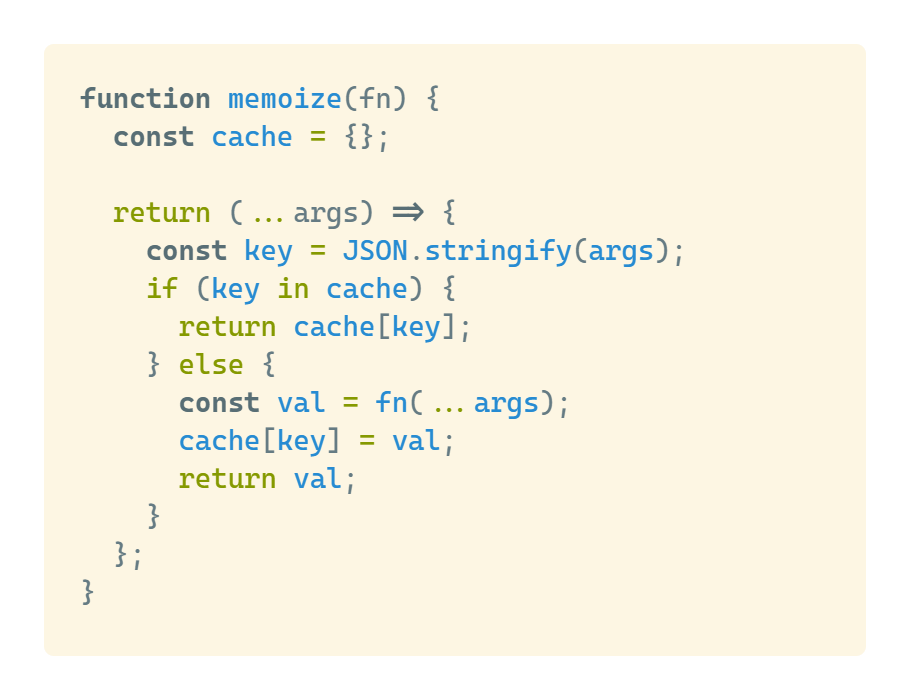Understanding JavaScript Closures
What is a Closure?
A closure is when an inner function can access variables from an outer function and remembers these variables.
Applications of Closures
State Preservation
In programming, we often need to maintain state information. The React library provides a useState hook that allows developers to manage state.
Simplified implementation example of useState:

Caching Mechanism
Since closures allow inner functions to remember external variables, we can use this characteristic to implement caching mechanisms.
Implementing a caching mechanism:

Simulating Private Variables
Many programming languages have syntax for declaring private methods. These private variables are hidden from the outside, which is an important feature because sometimes we don’t want external code to access the internal details of our implementation. JavaScript doesn’t natively support private variables, but we can achieve similar functionality through closures.
Example implementation of simulated private variables:

Drawback of Closures: Memory Leaks
While closures are useful, they can lead to memory leaks when they maintain references to variables that are no longer needed. When this happens, these variables cannot be released by JavaScript’s garbage collection mechanism, causing them to remain in memory unnecessarily.
JavaScript’s garbage collection algorithm (Mark-and-sweep) starts from global objects (roots), identifies all referenced objects, and then collects anything unreachable. Memory leaks occur when objects are still reachable through references but are no longer needed by your program. Specifically, when you no longer need something, but references to it still exist, it won’t be garbage collected, leading to memory leaks. For this reason, closures should be used with caution.



